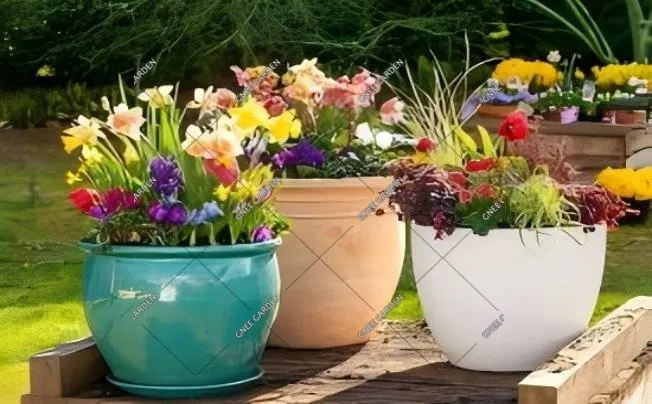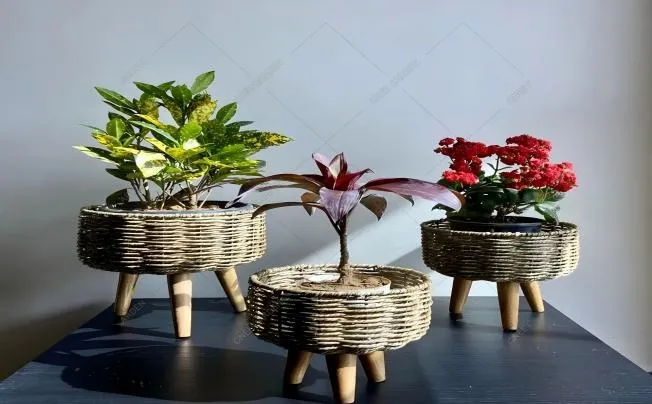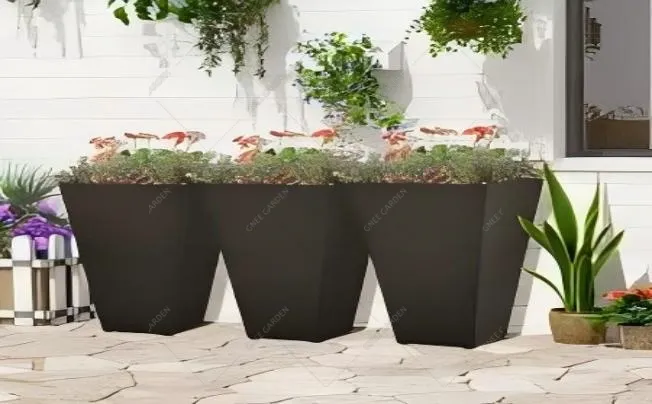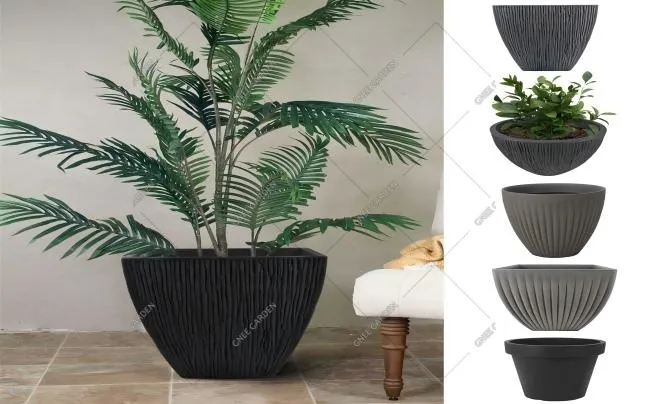What Is The Best Flower Pot?
Gardening pots, which are used extensively in landscaping, landscape projects, and private garden villas, are containers for growing flowers and plants.
Introduction of Flower Pot
A flowerpot, planter, planterette, or plant pot is a container used for the cultivation and display of flowers and other plants.
They have a round shape and taper inwards, and they are traditionally—and still to a large part today—made of unglazed terracotta. Wood, stone, metal, plastic, and occasionally biodegradable materials are used to make flowerpots. Young transplant plants can be cultivated in biodegradable pots composed of heavy brown paper, cardboard, or peat moss.
Typically, pots for seedlings starting in commercial greenhouses or polytunnels are trays with cells, with each cell functioning as a single little pot. These trays are frequently referred to as flats. Typically, pots have holes in the bottom to let extra water drain, perhaps to a saucer underneath the flowerpot.

Material Classification Of Flower Pots
1. Flower pots made of plastic are inexpensive, lightweight, and come in a wide variety of colours and designs. However, they have poor air and water permeability, are easily cracked, have a short service life, and are not extrusion resistant.
2. A gallon flower pot is a plastic container with a special composition, a low cost, and excellent performance. Extrusion resistance, high hardness, good bearing capacity, good water retention, light weight, and ease of mobility. The air permeability is really low, though.
3. Clay pots come in red and grey and are also referred to as mud pots or unglazed pots. Low cost, full specs, good air permeability and drainage, but rough appearance.
4. Zisha pot, sometimes called pottery pot, is a type of beautiful, straightforward, and generous pottery that is typically purple. However, its permeability to air and water is inferior to that of clay pots. It can be used as a set pot or to grow trees and flowers that prefer wetness.
5. Ceramic pot: Crafted from porcelain clay and covered in a colourful glaze, this pot is incredibly well-made, stylish, and has a lovely shape. Its limited ventilation and drainage are a drawback, and it is typically used as a cover pot for a clay pot to exhibit flowers or adorn the interior.
6. FRP flower pot: sometimes referred to as a FRP flower pot, this type of flower pot has a clay mould or sculpture texture. They come in a variety of styles, are strong and long-lasting, do not deform, are resistant to corrosion, have full specifications, and may be painted with different colour effects.

7. Sandstone flower pot: Among the better materials for flower pots, this one is composed of finely carved sandstone in a variety of colours, and its surface can be customised.
8. The flower container made of GRC cement weighs a fair amount. Fibre cloth and anti-corrosion, anti-freezing, and anti-corrosion ingredients are added to the cement in the flower pot. The surface effect may be turned into a realistic stone paint effect, and it is strong and long-lasting.
9. Magnesium flower pot: Brine and magnesium oxide are combined, modifiers are added, and the resulting slurry is applied to the glass mesh. They are affordable, come in a variety of styles, are strong and long-lasting, and may be used as boutique indoor decorations.
10. Metal flower pots: iron, copper, aluminium, Galvanized, and other metal pots are contemporary, lightweight, long-lasting, and have strong resistance to wind, corrosion, and moisture retention. They also have some cosmetic benefits, but the hot and cold reactions might harm plants. It is important to protect it from the sun and rain when using it outside.
11. Glass flower pots: translucent and lovely, they may bring elegance and freshness to the interior space, and they have good air permeability and thermal insulation, but they are weighty, break easily, and are difficult to move. They are prone to causing soil moisture to evaporate too quickly and demand strong flower-growing skills.
12. Wooden flower containers are natural, lightweight, easy to move and swap out plants, and can create a more organic ambiance. Although the drainage and air permeability are acceptable, wood rot should be avoided.
13. Straw flower pots: made from natural straw ropes, these pots are natural, eco-friendly, have a certain amount of air permeability and moisture retention, can control soil moisture, come in a variety of shapes, and can be hung or set on the ground. However, because they are typically light, it is important to take care not to let the wind blow them over when setting them down.

Advantages And Disadvantages Of Various Flower Pots
The "best" garden pot doesn't exist. Pots made of various materials and designs are appropriate for various situations and each has pros and cons of its own.
Flower pots made of plastic
Benefits include affordability, portability, rich colour and style, and the ability to satisfy a variety of aesthetic requirements. Plants that must be moved or hung regularly, including tiny potted plants on windowsills and balconies, can benefit from this durable material.
Drawbacks include poor water and air permeability, a lack of resistance to extreme heat and UV radiation, and a propensity to age, distort, and fade after prolonged exposure to sunshine.
Benefits of gallon flower pots include high hardness, good bearing capacity, compression resistance, light weight, ease of mobility, low cost, and high cost performance. Plants of various sizes can be planted using the range of specifications available.
The air permeability is comparatively low, yet it is marginally better than that of standard plastic flower pots.
Benefits of terracotta pots include their high water and air permeability. The material's porous nature allows it to effectively control soil moisture and maintain flower roots' dryness. The appearance often has a simple, natural beauty that can give the garden a charming feel.
Relatively hefty, breakable, and pricey are some drawbacks.
Benefits of purple sand pots include good water and air permeability. Purple sand's microporous nature facilitates the complete circulation of water and oxygen in the soil, which helps flower roots breathe and absorb nutrients. It has great creative value, is beautifully crafted, generous and uncomplicated, and has a lovely appearance.
The cost is costly, the air and water permeability are inferior to those of clay pots, and when using it to plant trees and flowers that require moisture, the frequency of watering should be considered.
Benefits of stoneware pots include: Excellent air permeability; the material's surface is dotted with microscopic holes that can let air flow through the soil and stop root rot. Strong durability, typically very strong, capable of withstanding environmental and temporal tests. With a natural pastoral ambiance, different styles can be paired with different home styles.
Its somewhat rugged appearance, lack of delicateness, weight, and difficulty in carrying and moving are its drawbacks.
Flower pots made of fibreglass
Benefits include a variety of styles, strength and durability, resistance to corrosion, no deformation, full specifications, surface colour effects, and the ability to accommodate a range of decorating requirements. lightweight, portable, and simple to set up.
Poor water and air permeability as well as a comparatively high cost are drawbacks.

Selected Blogs
-
What customization services are available for metalworking customization?
2024-12-12
-
What Is The Difference Between A Plant Container And A Raised Bed?
2024-04-23
-
Garden Screening & Fence Panels
2024-04-23
-
Gardening pot selection tips
2024-04-17
-
The function and collocation of horticultural fire pot
2024-04-17


